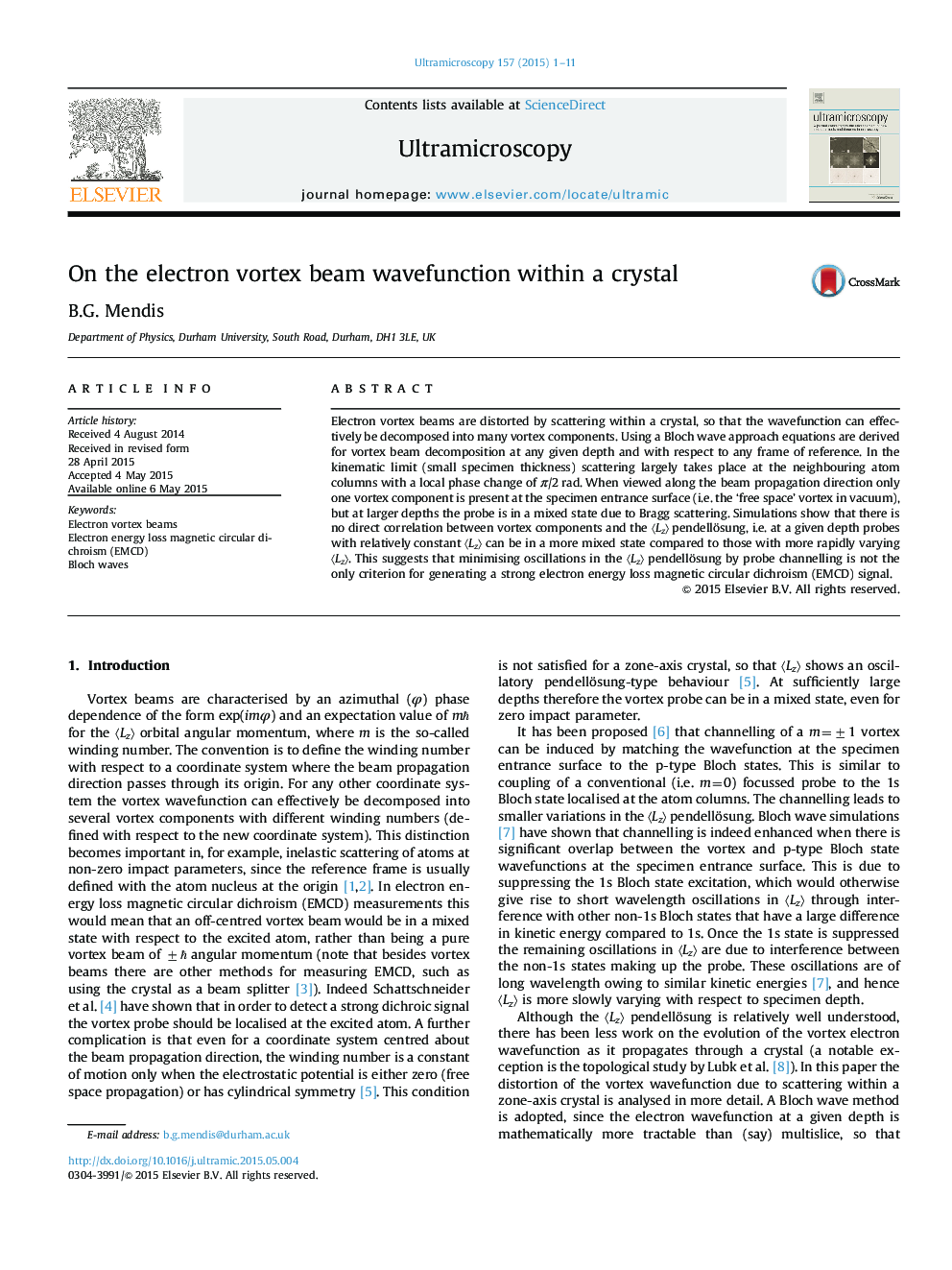| Article ID | Journal | Published Year | Pages | File Type |
|---|---|---|---|---|
| 8038066 | Ultramicroscopy | 2015 | 11 Pages |
Abstract
Electron vortex beams are distorted by scattering within a crystal, so that the wavefunction can effectively be decomposed into many vortex components. Using a Bloch wave approach equations are derived for vortex beam decomposition at any given depth and with respect to any frame of reference. In the kinematic limit (small specimen thickness) scattering largely takes place at the neighbouring atom columns with a local phase change of Ï/2Â rad. When viewed along the beam propagation direction only one vortex component is present at the specimen entrance surface (i.e. the 'free space' vortex in vacuum), but at larger depths the probe is in a mixed state due to Bragg scattering. Simulations show that there is no direct correlation between vortex components and the ãLzã pendellösung, i.e. at a given depth probes with relatively constant ãLzã can be in a more mixed state compared to those with more rapidly varying ãLzã. This suggests that minimising oscillations in the ãLzã pendellösung by probe channelling is not the only criterion for generating a strong electron energy loss magnetic circular dichroism (EMCD) signal.
Keywords
Related Topics
Physical Sciences and Engineering
Materials Science
Nanotechnology
Authors
B.G. Mendis,
